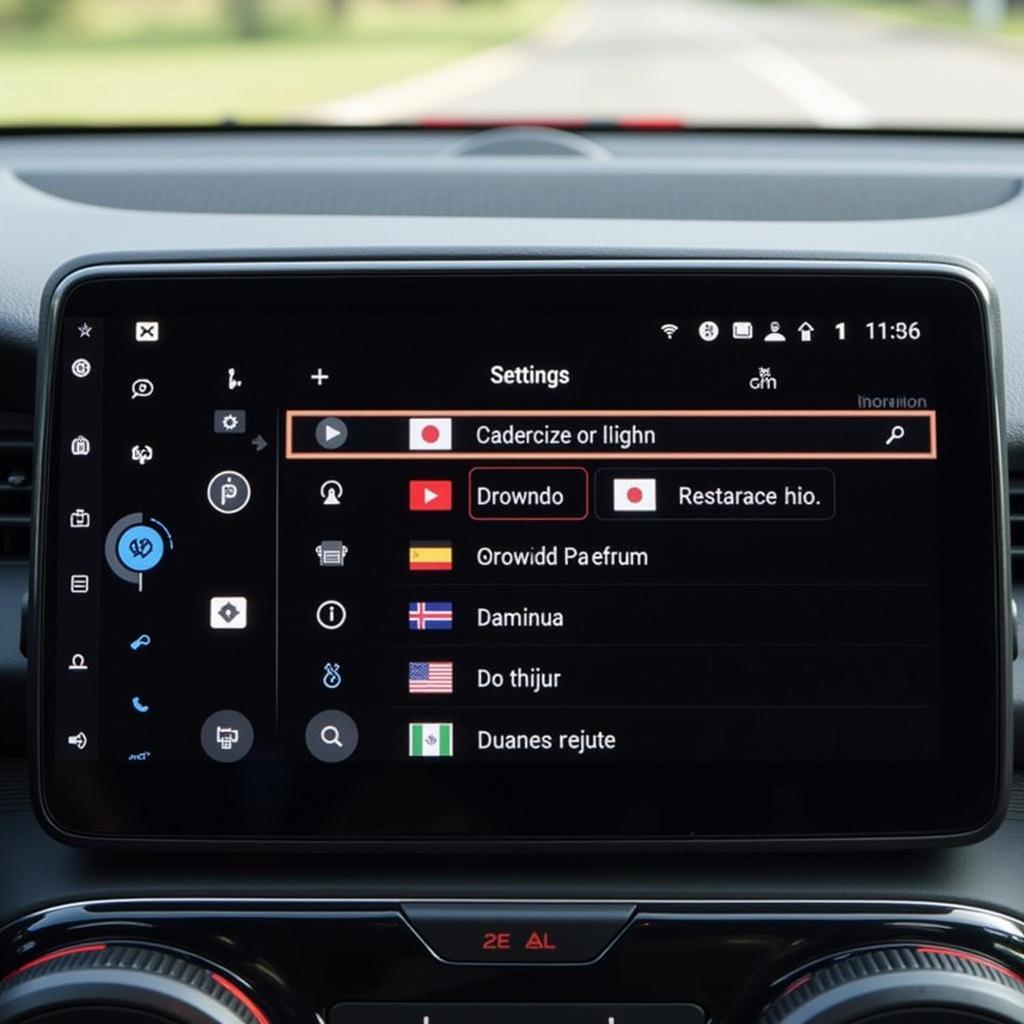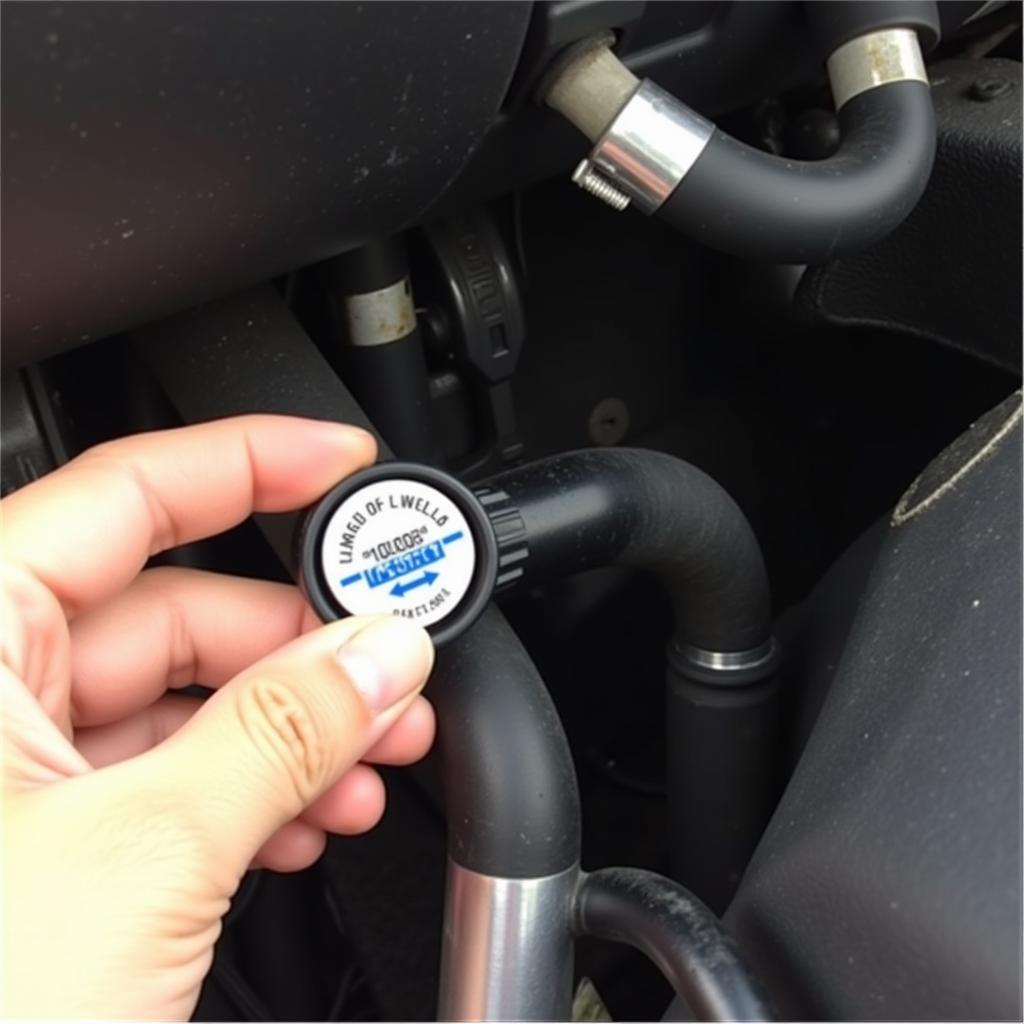The dreaded red brake warning light on your BMW E39’s dashboard – a sight that can send shivers down any driver’s spine. This little red beacon, often accompanied by an exclamation mark or the word “BRAKE,” signifies a potential issue with your braking system that demands immediate attention. Ignoring it could lead to disastrous consequences. But don’t panic just yet! This article serves as your comprehensive guide to understanding the common causes behind the BMW E39 red brake warning light and provides practical solutions to get you back on the road safely.
Decoding the Red Light: What Does it Mean?
The red brake warning light is your car’s way of communicating a critical problem with one or more components within the braking system. It’s different from the amber ABS (Anti-lock Braking System) light, which indicates a separate issue.
When the red brake warning light illuminates, it usually points to one of two major problems:
-
Low brake fluid level: Brake fluid is the lifeblood of your car’s braking system. It transmits hydraulic pressure from the master cylinder to the brake calipers, enabling your car to stop. If the fluid level drops below a certain point, the warning light will come on.
-
Brake system malfunction: This could encompass a range of issues, including:
- Worn brake pads: Over time, brake pads wear down, reducing their effectiveness and triggering the warning light.
- Faulty brake calipers: These components house the brake pads and pistons, and if they malfunction, it can affect braking performance.
- Issues with the brake lines: Leaks or damage to the brake lines can lead to a loss of brake fluid pressure.
- Problem with the parking brake: If the parking brake isn’t fully disengaged, it can trigger the warning light.
Common Causes and Troubleshooting Tips
Now that we understand the general reasons behind the red brake warning light, let’s delve into specific causes and how to address them:
1. Low Brake Fluid: A Likely Culprit
Low brake fluid is the most common reason for the red brake warning light to illuminate. This can occur due to:
- Leaking brake fluid: Inspect your brake lines, calipers, and master cylinder for any signs of leaks, which may appear as wet spots or drips.
- Worn brake pads: As brake pads wear down, the brake calipers need more fluid to function correctly, leading to a drop in the fluid level.
- Time for a brake fluid flush: Brake fluid is hygroscopic, meaning it absorbs moisture over time. This contamination can reduce its effectiveness and necessitate a fluid change.
Troubleshooting:
- Check the brake fluid level: Locate the brake fluid reservoir in your engine bay and visually inspect the fluid level. If it’s below the “Min” mark, add the correct type of DOT 3 or DOT 4 brake fluid recommended for your BMW E39.
- Inspect for leaks: Thoroughly examine all the brake components and lines for any signs of leaks. If you find a leak, it’s crucial to get it fixed by a qualified mechanic immediately.
2. Worn Brake Pads: Time for a Replacement
Brake pads have a finite lifespan and will wear down with use. Worn brake pads not only trigger the warning light but also significantly compromise your braking ability.
Troubleshooting:
- Inspect brake pad thickness: If you’re comfortable with basic car maintenance, you can visually check the brake pad thickness through the wheel spokes. If they appear thin, it’s time for a replacement.
- Consult a mechanic: For a professional assessment, have a mechanic inspect your brake pads and replace them if necessary.
3. Faulty Brake Calipers: A Deeper Dive
Malfunctioning brake calipers can lead to uneven brake pad wear, brake fluid leaks, and ultimately, braking failure.
Troubleshooting:
Diagnosing and repairing brake caliper issues often requires specialized tools and expertise. It’s highly recommended to consult a qualified mechanic if you suspect a problem with your brake calipers.
4. Brake Line Issues: Don’t Ignore the Lines
Damaged or leaking brake lines disrupt the hydraulic pressure required for effective braking.
Troubleshooting:
- Visual inspection: Check for any cracks, bulges, or leaks along the brake lines.
- Professional inspection: Due to the critical nature of brake lines, it’s advisable to have a mechanic thoroughly inspect and repair or replace any damaged lines.
5. Parking Brake Malfunction: A Simple Check
Sometimes, a simple oversight like not fully disengaging the parking brake can trigger the red warning light.
Troubleshooting:
- Ensure the parking brake is fully released.
When to Seek Professional Help
While some causes of the red brake warning light can be addressed with basic troubleshooting, it’s crucial to remember that your braking system is critical for your safety.
Seek professional help immediately if:
- You notice any brake fluid leaks.
- Your brake pedal feels spongy or goes all the way to the floor.
- You hear unusual noises like grinding or squealing when braking.
- The brake warning light remains on even after adding brake fluid.
- You’re uncomfortable or unsure about performing any of the troubleshooting steps.
FAQs about BMW E39 Red Brake Warning Light
1. Can I still drive my BMW E39 with the red brake warning light on?
It’s highly discouraged and dangerous to drive with the red brake warning light illuminated. It indicates a potential problem with your braking system, putting you and others at risk.
2. How much does it cost to fix a BMW E39 red brake warning light issue?
The repair cost can vary greatly depending on the underlying cause. A simple brake fluid top-up might cost a few dollars, while replacing major brake components like calipers or the master cylinder can be significantly more expensive.
3. How often should I check my BMW E39’s brake fluid level?
It’s a good practice to check your brake fluid level at least once a month and more frequently if you notice any changes in your brake pedal feel.
4. Can I use any brake fluid in my BMW E39?
No, use only the type of brake fluid recommended in your owner’s manual, typically DOT 3 or DOT 4. Using the wrong type can damage your braking system.
5. How can I prevent the red brake warning light from coming on?
Regular brake system maintenance, including timely brake pad replacements, brake fluid flushes, and inspections, can help prevent many brake-related issues, including the red warning light.
Conclusion
The red brake warning light in your BMW E39 is not a signal to be ignored. Understanding its potential causes and taking prompt action is vital for your safety on the road. While some issues might be simple to resolve, always err on the side of caution and consult a qualified mechanic if you’re unsure about any aspect of your car’s braking system.
Remember, a well-maintained braking system is a crucial investment in your safety and the safety of others on the road.


